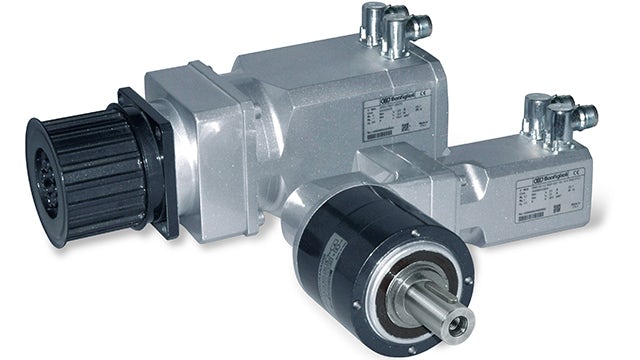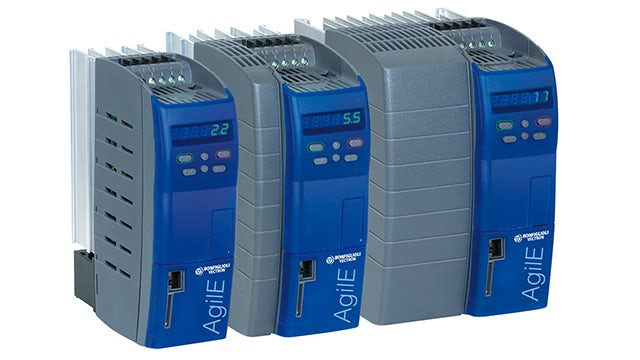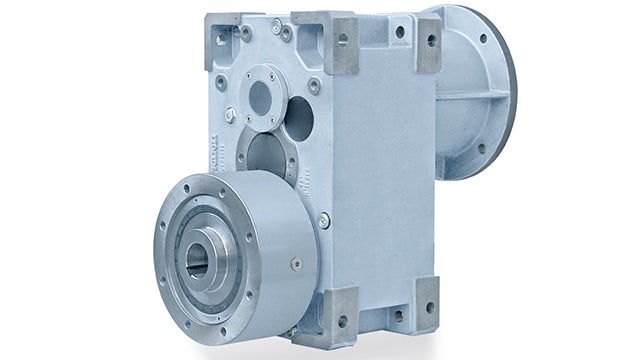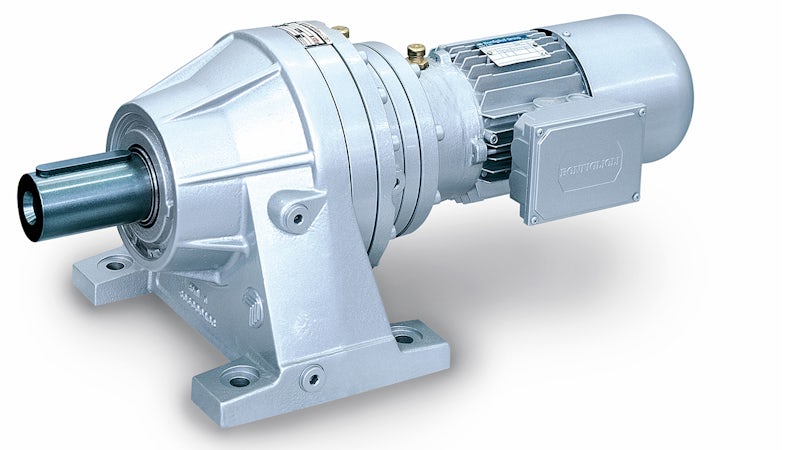Using Teamcenter helps Bonfiglioli standardize production at international subsidiaries
Leader in power control and transmission systems unifies global research and development operations
Bonfiglioli
Bonfiglioli Riduttori SpA designs and manufactures power transmission and control solutions such as gearboxes, inverters, gear motors and electric motors in the industrial, mobile and renewable energy sectors.
http://www.bonfiglioli.com/- Headquarters:
- Lippo di Calderara di Reno, Bologna, Italy
- Products:
- NX, Teamcenter
- Industry Sector:
- Industrial machinery
Now, with the help of Teamcenter, all subsidiaries can access the same database as the mother company. Everyone can work with the same design rules, while the headquarters can monitor the activity of our subsidiaries and guide them to the best solution. Ultimately, the solutions they develop can be re-used, because their know how is captured into our system.
Bonfiglioli Riduttori
Guiding worldwide design operations
Using Teamcenter® software from product lifecycle management (PLM) specialist Siemens Digital Industries Software is helping improve the ability of Bonfiglioli Riduttori SpA (Bonfiglioli) to guide and monitor worldwide design and development operations.
Bonfiglioli is a global organization with 11 manufacturing sites, 17 subsidiaries and an extensive network of distributors. Bonfiglioli gearboxes are used in everything from machine tools to supermarket belt conveyors to wind farms and offshore oil rigs. Large gearboxes help control wind turbines, earthmoving machinery, cranes, grinding machines, pipe forming systems and concrete mixers. For mechatronics applications, Bonfiglioli makes smaller-size gearboxes to drive products such as routers, in order to control movements on a miniature scale with a high degree of accuracy.
“Our business turns around logistics,” explains Paolo Cominetti, R&D (research and development) manager, industrial solutions business unit. “If you want to be successful in this market, any component required by the customer must be readily available. Rapid responsiveness and time-to-market is vital. So, we manage a catalog with millions of configurations.”
BOM (bill of materials) management at Bonfiglioli is complex, taking into account several versions for each component. Each version has a corresponding BOM stored in the information technology (IT) system. “With the exception of a few made-toorder products, the vast majority of our components are generated by a configurator and the corresponding BOM is created dynamically when a customer defines a specific configuration,” says Cominetti. “Sometimes a product essentially ‘sleeps‘ for several years, but these ‘sleepers’ are still in the catalog. When a customer requests such a product, the organization must be ready to respond with flexibility and efficiency. To ensure fast order execution while minimizing inventory, we have implemented a system that can generate a huge number of variants.“

Worldwide consistency
All Bonfiglioli subsidiaries must rely on the same management systems with the same logic. This was the original driver of a project launched a few years ago to standardize operations in the subsidiaries. The company wanted subsidiaries to replicate the entire development and engineering system, including workflows to manage design operations, while taking into account specific local needs and customer requirements.
“By the end of 2014, all subsidiaries will have identical development tools and processes,” Cominetti says. “As a result, we will cut development time and enable subsidiaries to customize products based on customer specifications. While we will have one unified tool in use globally, we will also be able to leverage the knowledge and expertise of our subsidiaries. We can re-use a design originally developed in America in products for Europe or Asia. This vision of global R&D requires the full integration of engineering departments at every location. We expect this concept to bring huge benefits and great results.“
The project involves 17 sites at which products are being developed internally as well as to customer specifications, with varying degrees of complexity. The central engineering department in Italy monitors the creation of new drawings and development methods and takes immediate action in case of errors or non-compliance.

3D models on demand
The global integration of engineering departments began in 2005 from a specific opportunity related to a web application called Mosaico from Soulid Studio. Mosaico enables customers to order and purchase configurable industrial products via the internet and helps the company track the entire sales cycle.
“Many customers had asked to download 3D models of the product to use it in their own designs,” Cominetti says. “Ever since the 1990s, all our models have been designed using NX from Siemens Digital Industries Software, with excellent results. So, it was a natural decision to turn to the same vendor for our new PLM requirements.”
The new PLM solution needed to provide engineers with a tool for computer-aided design (CAD) vaulting, classification and re-use and enable R&D sites to solve file exchange and data sharing issues. The new PLM solution also had to help Bonfiglioli engineers deliver 3D models to the Mosaico application, generating models dynamically to match any configuration ordered by customers. This was the origin of a configurator created using Teamcenter that can generate a 3D model from a web-based configuration, providing customers with the ability to choose any export format.
“With the help of Teamcenter, all subsidiaries can access the same database as the mother company,” Cominetti says. “Everyone can work with the same design rules, while headquarters can monitor the activity of our subsidiaries and guide them to the best solution. Ultimately, the solutions they develop can be re-used, because their know-how is captured in our system.“
The implementation of Teamcenter supported the definition of the new development process, with shared design tools and rules and a single, unified, web-based calculation tool accessible to everyone. The project also allowed Bonfiglioli to classify the most frequently ordered specialty products, so that the mother company could decide when and if to add such specialties to the standard catalog.
“Specialty classification helps us select different types of projects and assign them to the best qualified subsidiary or to our design center in Italy,“ Cominetti explains. “Teamcenter helps engineers handle the classification process and the workflow shared among headquarters and branches. Before using Teamcenter, we had little control on out-of-standard customer requests. Now we have also implemented global control on special products. We can identify specialties that we expect to be more frequently requested in the future and add them to our catalog. As a result, we reduce the number of higher-cost specialties, while we expand the catalog to the benefit of our customers.“

Integrating Teamcenter with SAP
The use of Teamcenter has already been extended to two R&D offices in India, which extensively collaborate with the headquarters. The flexible architecture of Teamcenter supported this extension with little effort or cost. But most of all, as Stefano Sarti, PLM manager, explains, “Bonfiglioli has implemented one of the best Teamcenter integrations with SAP. Initially, we had a classical integration to manage items, documents and BOMs, transferring them from Teamcenter to SAP. For item code generation and BOM management, SAP was the master. Following the Teamcenter implementation, however, the generation of item codes for components and subassemblies was entrusted to the engineering department. This was a momentous change, because designers automatically generate the item code using Teamcenter as they develop the CAD model. The information is then released to SAP via a workflow.”
This process does not yet transfer configuration data, a capability that will be added in 2014 when Bonfiglioli transitions to a newer release of Teamcenter. “Over the years, Teamcenter has been evolving constantly, meeting Bonfiglioli’s requirements for PLM and ERP (enterprise resource planning) integration,” Cominetti concludes. “Integration has been expanded to the extent that we can handle complex processes using two configurators with different approaches.”

Ever since the 1990s, all our models have been designed using NX by Siemens Digital Induistries Software, with excellent results. So, it was a natural decision to turn to the same vendor for our new PLM requirements.
Bonfiglioli Riduttori
